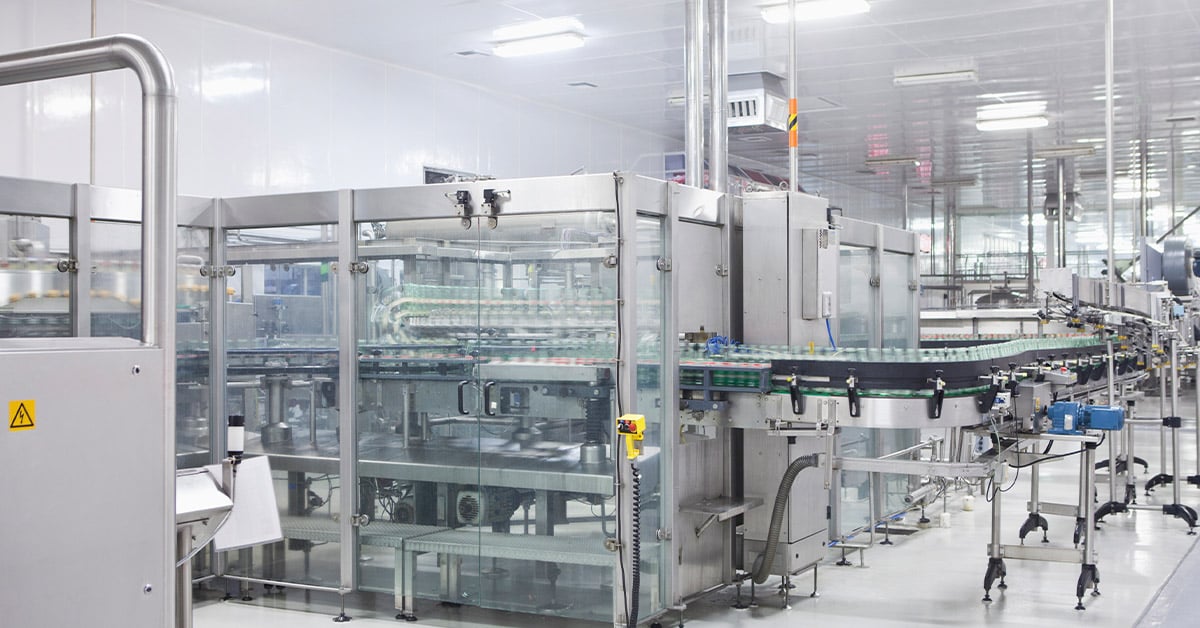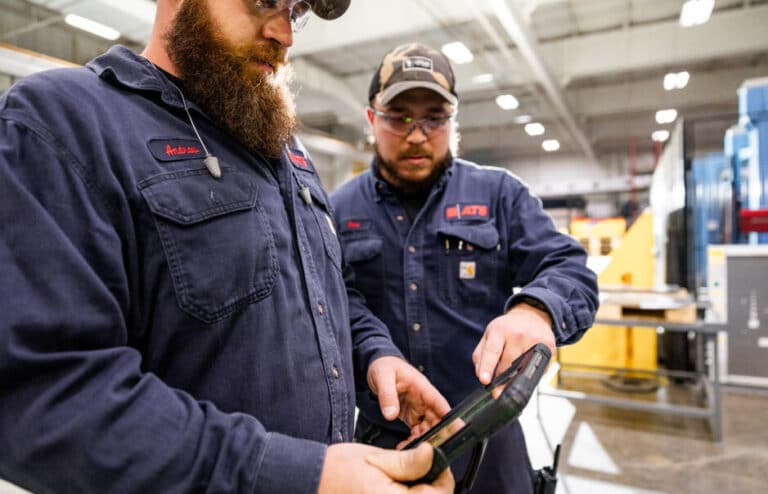Predictive maintenance entails using data from instrumented machinery to identify when servicing or overhaul is needed. In principle, this reduces maintenance work and expense while improving equipment availability. In practice though, implementation often faces resistance. Running a predictive maintenance pilot program is a way of gathering data to win over naysayers and demonstrate a return on the effort and investment. It also helps fine-tune the roll-out to larger areas.
This blog explains how to implement predictive maintenance, starting with a small-scale demonstration. By going through the steps involved and discussing the benefits to expect, it will guide development of a predictive maintenance strategy.
Steps for implementing a predictive maintenance pilot program
A pilot program has two primary goals: to gather the data needed to justify a broader implementation and to identify when changes in approach are needed to maximize benefits. Beyond this, it will also help win over those who might resist the idea of predictive maintenance, on the grounds of cost or risk, or because it’s seen as a threat.
The following 10 steps describe the key elements of a pilot predictive maintenance plan.
1. Define Objectives and Criteria: Start by deciding what is to be achieved, and how progress will be measured. Also part of objective setting, establish a budget as this will determine the number and range of sensors to be deployed.
Objectives are usually:
- Reduce downtime (or increase availability)
- Extend equipment life
- Reduce maintenance expenses
Measurement is usually in terms of mean time before failure (MTBF), availability (as part of an OEE calculation), or in dollars, but other measures may be agreed as part of the pilot.
2) Achieve Stakeholder Buy-In: A successful pilot will need support from many groups and individuals. This is achieved by investing time in discussing the objectives and what it will mean for the business with them. The groups most affected are:
- Maintenance technicians, who may feel this is a work reduction exercise
- Maintenance planners, who need to understand how to work with the prediction algorithms
- Production management, who will be concerned about the risks of machine breakdowns
- Manufacturing engineering, who will be involved in sensor selection and installation, as well as data analysis
- Machine/equipment operators, as the people who spend most time with the machinery, they need to know about the program so they can help with observations when appropriate
3. Choose Assets to Test: It’s vital to select an area or group of machines that will show off the benefits of predictive maintenance. This means choosing assets of high importance to manufacturing and of a type for which sensor technology is available. Rotating machinery like pumps, motors and fans can be a good pilot application because a number of sensing and diagnostic technologies are available.
4. Develop Data Collection and Analysis Plans: Establish baseline performance data, then determine how data from sensors installed on the pilot equipment will be captured and analyzed. Will it rely on someone making periodic visits to the machinery and gathering sample data, or will Industry 4.0 technology be used to capture and analyze in real-time? Is there an opportunity to make this a predictive maintenance machine learning pilot project?
5. Select Proper Condition Monitoring Equipment: Having identified the machines or area for the pilot, determine which parameters should be monitored. Where maintenance records exist, review these to determine the primary failure modes. It may also make sense to run a root cause analysis to be sure the correct characteristics are selected for monitoring. Once these are established, search for sensors with the appropriate features, such as high sampling rates and communications interfaces, and possibly edge computing capabilities.
6. Set Expectations: A pilot program is an opportunity to learn what works and what does not. Predictive maintenance will not eliminate all breakdowns, at least not initially. It takes time to build up the history that enables early detection of inconsistencies in operation.
When inconsistencies are observed, inspection will be needed to see how machine condition, and likelihood of breakdown, correlate to the data. This could result in more downtime than was the case before implementing the pilot. Stakeholders should be prepared for this before the program gets underway.
7. Implement Pilot Program: Install sensors and begin collecting data. Implement and test data algorithmic models to detect anomalous conditions that may signal an approaching breakdown. Perform machinery inspections to ascertain the reasons for any abnormal signals detected. Keep stakeholders fully informed of progress.
8. Pursue Continuous Feedback and Modeling Improvement: The pilot program should be updated as lessons are learned and new information becomes available. A core element is to use predictive maintenance modeling to guide refinement of the algorithms used.
Improvement may include adding more sensors or sensors of a different type, changing sampling frequencies and revising action thresholds.
9. Analyze Successes and Failures: If machinery breaks down during the pilot study it’s vital to understand why signs were not detected or not acted on in a sufficiently timely manner. Conversely, if a decision is made to perform maintenance work based on the data captured, replaced parts and machine condition must be reviewed to estimate closeness to failure. Remember, and ensure stakeholders understand, breakdowns are improvement opportunities and not all maintenance work should be considered a success if it did not prevent a breakdown.
10. Consider Scalability: The ultimate goal of a predictive maintenance pilot study is to gather the data to both justify and guide the roll-out of a bigger program. This might be across a single line in a plant, throughout an enterprise, or somewhere in between.
Factors to consider when planning a wider implementation include:
- Variety of sensor technologies and number of vendors: In general, fewer is better as standardization reduces learning curves and simplifies spares requirements, providing the right characteristics are being monitored.
- Communications technologies: Wired Ethernet may work in a small area close to the maintenance administration offices but on a plant spanning many acres, or when the goal is to implement predictive maintenance across multiple facilities, other technologies such as cellular may be more appropriate.
- Data analysis and interpretation responsibilities: Manual methods may be appropriate for the pilot study, but automation will become essential as the volume of data rises. Decide whether machine learning or other analysis tools will be helpful.
Benefits of predictive maintenance programs
The goal of industrial maintenance is to ensure machinery is available to run when needed, at the required rate and quality. Many manufacturing plants use planned maintenance strategies to achieve this, but as resources are scarce and machine time limited, it’s important to focus on priority aspects.
Predictive maintenance uses machine monitoring and machine history data to determine when work is needed. The benefits of this are:
- Eliminates unnecessary maintenance work: This avoids taking machinery out of service and saves on both maintenance hours and materials.
- Better maintenance scheduling: By estimating the time remaining before failure from when an inconsistent or abnormal parameter is detected, (best done with the aid of a detailed machine history), it’s possible to schedule repair work for a time that won’t disrupt production.
- Reduced spare parts inventory: Rather than maintaining large stocks of parts such as couplings, belts and filters in case of breakdown, inventories can be reduced because spares need only be purchased when a decision is taken to schedule repair or replacement work.
- Higher machine availability: Optimizing maintenance schedules and the type of work done will reduce breakdowns and the need to interrupt production for inspection and servicing. This supports higher OEE and output.
- Increased maintenance technician engagement: No one enjoys performing unnecessary work, which is sometimes the case when time-based preventive maintenance strategies are in place. With a predictive maintenance strategy, as technicians learn that the system is helping them prevent failures, they will develop more trust in what it tells them and will see the benefits in fewer breakdowns.
Get help with implementing predictive maintenance
Predictive maintenance promises to reduce maintenance work, and so lower costs, while also improving machine availability. However, proposals to adopt this kind of maintenance strategy often face resistance, particularly with regard to implementation costs and subsequent benefits. In addition, it’s seldom realistic or practical to identify all the important characteristics to monitor before starting such a program. Instead, it’s important to keep revising the approach based on the lessons learned and data acquired.
A predictive maintenance pilot program is a low risk way to address these concerns, while gathering data, learning lessons, and getting stakeholders on-board with the objectives. However, such a program needs careful planning and implementation if it is not to undermine the broader goals.
This blog has set out ten steps to follow in creating and implementing a predictive maintenance pilot, and may be enough for some readers to “go it alone.” Others however, will consider the benefits of working with a predictive maintenance services partner who has the experience to identify and counter potential pitfalls before they occur.
As a leader in the field of outsourced industrial maintenance, ATS has the expertise needed to help develop and implement effective predictive maintenance strategies. Contact us to learn more.


